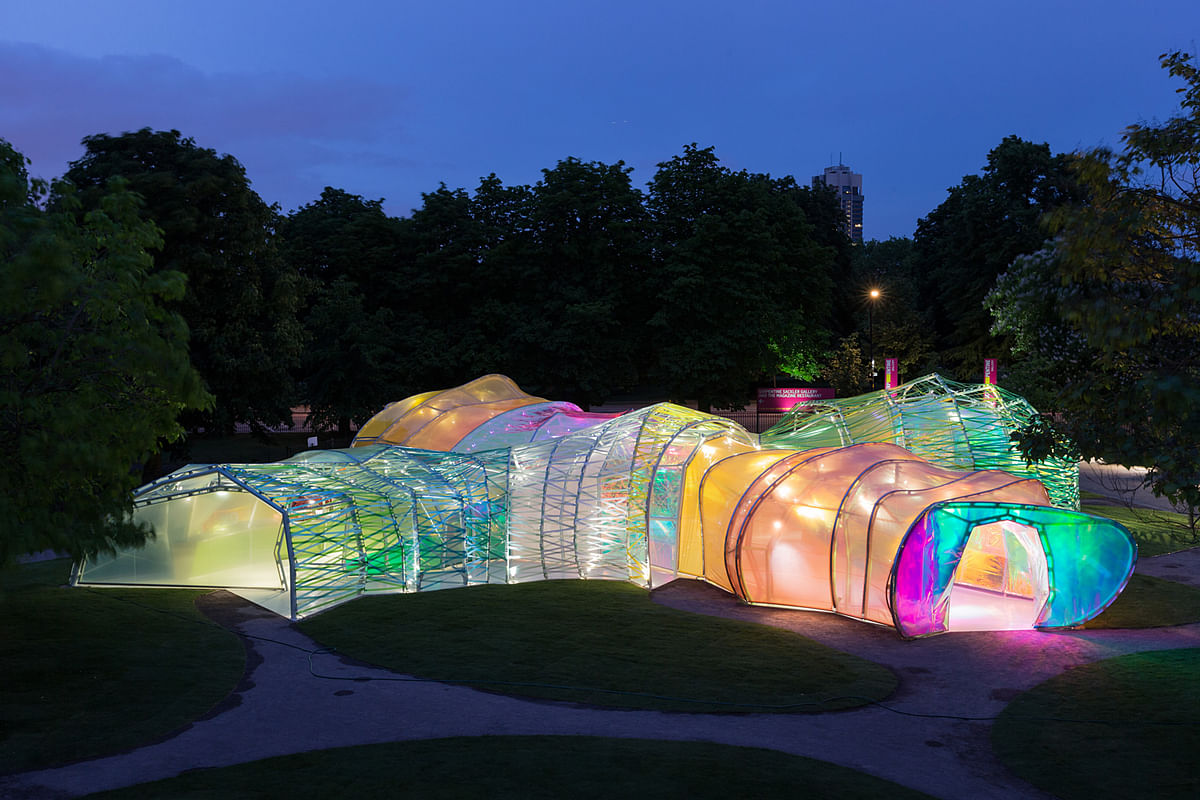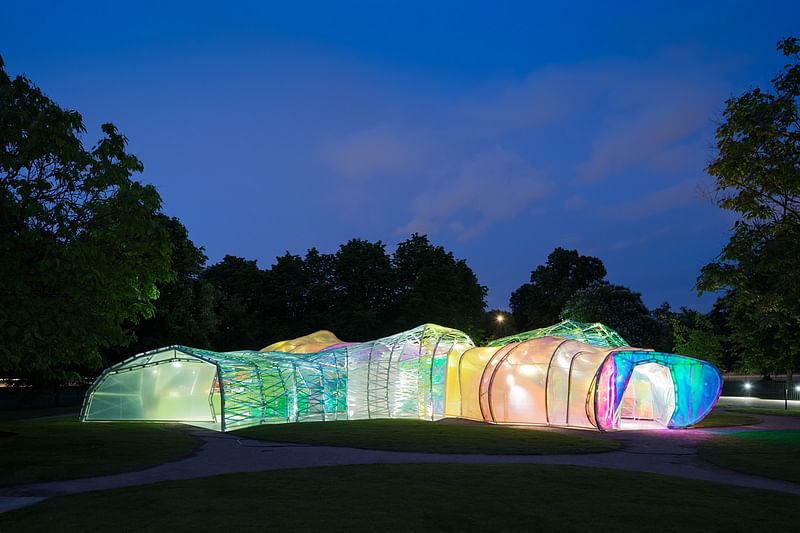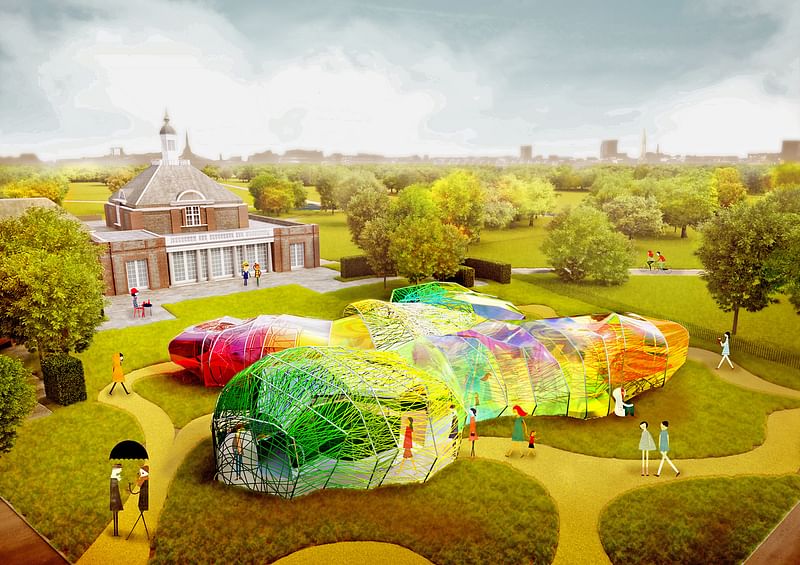SelgasCano's 2015 Serpentine Pavilion now open to the public
By Bustler Editors|
Monday, Jun 22, 2015

Related
The long-anticipated Serpentine Pavilion is back again for the 2015 summer season! Since 2000, the Serpentine Gallery has invited famous architects like Sou Fujimoto, Jean Nouvel, Herzog & de Meuron with Ai Wei Wei, Peter Zumthor, SANAA, Zaha Hadid, and most recently Smiljan Radic to design the temporary outdoor structure, which continues to draw hundreds of thousands of visitors every year at the Gallery's Kensington Gardens in London. The design criteria is still the same since the beginning: the pavilion must be a flexible multi-functional social space with a cafe.
Spanish architecture firm SelgasCano was invited by the Gallery to design the 2015 Serpentine Pavilion last December. As a solid UK debut for SelgasCano, their design for the pavilion is a polygonic structure with winding colorful tunnels that will be fun for visitors of all ages.
"The design render shows an amorphous, double-skinned, polygonal structure consisting of panels of a translucent, multi-coloured fabric membrane (ETFE) woven through and wrapped in webbing. Visitors will be able to enter and exit the Pavilion at a number of different points, passing through a ‘secret corridor’ between the outer and inner layer of the structure and into the Pavilion’s brilliant, stained glass-effect interior."

In describing their design, José Selgas and Lucía Cano said: 'When the Serpentine invited us to design the Pavilion, we began to think about what the structure needed to provide and what materials should be used in a Royal Park in London. These questions, mixed with our own architectural interests and the knowledge that the design needs to connect with nature and feel part of the landscape, provided us with a concept based on pure visitor experience.'

'...The spatial qualities of the Pavilion only unfold when accessing the structure and being immersed within it. Each entrance allows for a specific journey through the space, characterised by colour, light and irregular shapes with surprising volumes. This is accomplished by creating a double-layered shell, made of opaque and translucent fluorine-based plastic (ETFE) in a variety of colours.'

'At the heart of the Pavilion is an open space for gathering as well as a café. We are also very much aware of the Pavilion’s anniversary in our design for the 15th annual commission. The structure therefore had to be – without resembling previous Pavilions – a tribute to them all and a homage to all the stories told within those designs.'

Check out previous Serpentine Pavilion posts on Bustler here.

Share
0 Comments
Comment as :